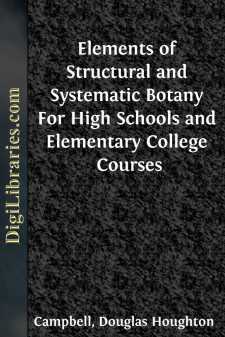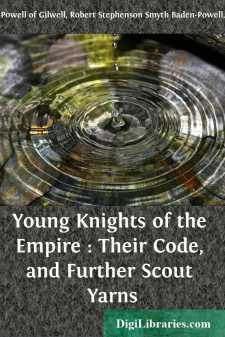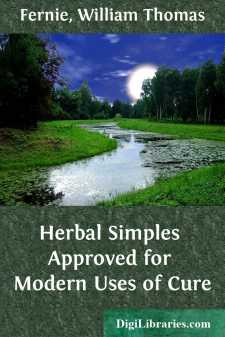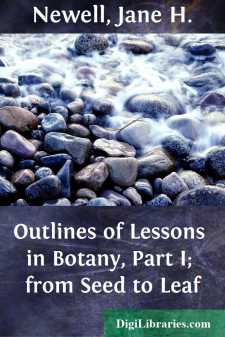Non-Classifiable
- Non-Classifiable 1768
Non-Classifiable Books
Sort by:
PREFACE. The rapid advances made in the science of botany within the last few years necessitate changes in the text books in use as well as in methods of teaching. Having, in his own experience as a teacher, felt the need of a book different from any now in use, the author has prepared the present volume with a hope that it may serve the purpose for which it is intended; viz., an introduction to the...
more...
THE SCOUT LAW Perhaps you wonder what is a Young Knight of the Empire. Well, you know what a knight is—or rather, used to be in the old days—a gallant fellow who was always ready to defend weaker people when they were being bullied; he was brave and honourable, and ready to risk his life in doing his duty according to the code or law of Chivalry. Well, nowadays there are thousands of boys all over...
more...
[1] INTRODUCTION. The art of _Simpling _is as old with us as our British hills. It aims at curing common ailments with simple remedies culled from the soil, or got from home resources near at hand. Since the days of the Anglo-Saxons such remedies have been chiefly herbal; insomuch that the word "drug" came originally from their verb drigan, to dry, as applied to medicinal plants. These...
more...
by:
E. W. Haslehust
The scenery which impresses most of us is certainly that in which Nature is seen in her wild and primitive condition, telling us of growth and decay, and of the land's submission to eternal laws unchecked by the hand of man. Yet we also feel a certain pleasure in the contemplation of those scenes which combine natural beauty with human artifice, and attest to the ability with which architectural...
more...
by:
Jane H. Newell
I. [Footnote 1: This section may be omitted, and the lessons begun with Seedlings, if the teacher prefer.] What is Botany? The pupils are very apt to say at first that it is learning about flowers. The teacher can draw their attention to the fact that flowers are only a part of the plant, and that Botany is also the study of the leaves, the stem, and the root. Botany is the science of plants. Ask them...
more...
by:
Charles Darwin
INTRODUCTION. THE chief object of the present work is to describe and connect together several large classes of movement, common to almost all plants. The most widely prevalent movement is essentially of the same nature as that of the stem of a climbing plant, which bends successively to all points of the compass, so that the tip revolves. This movement has been called by Sachs "revolving...
more...
SCOUTING AND THE SCHOOLS. Scouting continues to enjoy the cordial indorsement of school men everywhere all over the country. More and more those interested are coming to see the enormous possibilities of cooperation between the scout movement and the schools. Many schools now give credit for scout work done outside of the schools. Many more are in hearty sympathy with the program as an extraschool...
more...
by:
Anonymous
THE PREFACE. The many Inhabitants of Cities and Towns, as well as Travellers, that have for a long time suffered great Prejudices from unwholsome and unpleasant Beers and Ales, by the badness of Malts, underboiling the Worts, mixing injurious Ingredients, the unskilfulness of the Brewer, and the great Expense that Families have been at in buying them clogg'd with a heavy Excise, has moved me to...
more...
AUTHOR’S PREFACE Though dealing exactly with a surgical subject, this book is a layman’s word to laymen. It is an attempt to say to the general public a few things about this amazing work of Dr. J. R. Brinkley, of Milford, Kansas, which he is debarred from saying for himself in this simple form. He has under consideration a book of his own covering the subject of Goat-Gland Transplantation, his...
more...
BRIDGE DISASTERS IN AMERICA. Nearly all of the disasters which occur from the breaking down of bridges are caused by defects which would be easily detected by an efficient system of inspection. Not less than forty bridges fall in the United States every year. No system of public inspection or control at present existing has been able to detect in advance the defects in these structures, or to prevent...
more...











